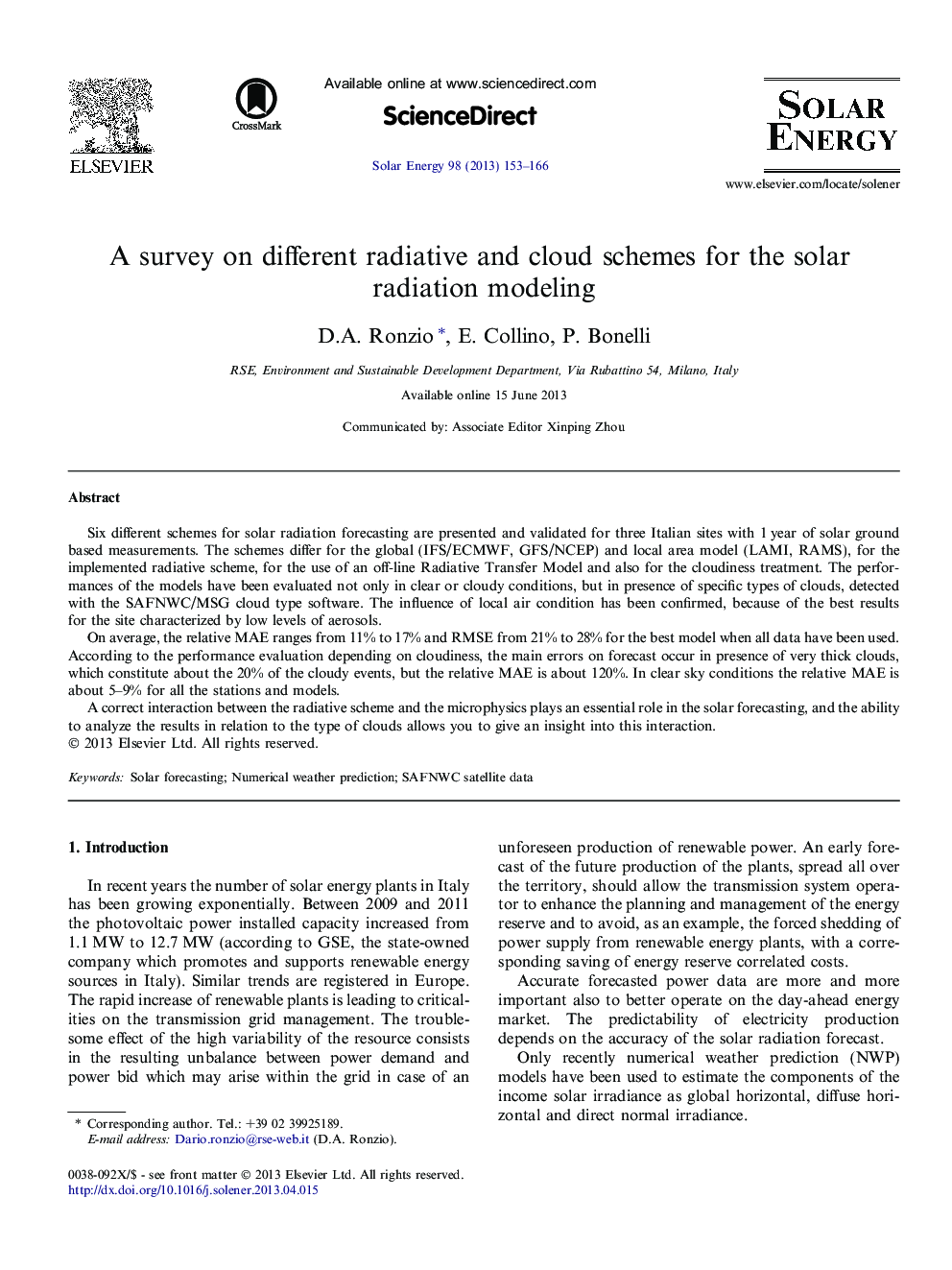| Article ID | Journal | Published Year | Pages | File Type |
|---|---|---|---|---|
| 1550438 | Solar Energy | 2013 | 14 Pages |
•Six different schemes for solar radiation forecasting are analysed.•Different radiative and cloud schemes are tested.•The models performances vary a lot in clear or cloudy conditions.•The forecast error is analysed for specific types of clouds.•SAFNWC is used to characterize the type of cloud.
Six different schemes for solar radiation forecasting are presented and validated for three Italian sites with 1 year of solar ground based measurements. The schemes differ for the global (IFS/ECMWF, GFS/NCEP) and local area model (LAMI, RAMS), for the implemented radiative scheme, for the use of an off-line Radiative Transfer Model and also for the cloudiness treatment. The performances of the models have been evaluated not only in clear or cloudy conditions, but in presence of specific types of clouds, detected with the SAFNWC/MSG cloud type software. The influence of local air condition has been confirmed, because of the best results for the site characterized by low levels of aerosols.On average, the relative MAE ranges from 11% to 17% and RMSE from 21% to 28% for the best model when all data have been used. According to the performance evaluation depending on cloudiness, the main errors on forecast occur in presence of very thick clouds, which constitute about the 20% of the cloudy events, but the relative MAE is about 120%. In clear sky conditions the relative MAE is about 5–9% for all the stations and models.A correct interaction between the radiative scheme and the microphysics plays an essential role in the solar forecasting, and the ability to analyze the results in relation to the type of clouds allows you to give an insight into this interaction.
